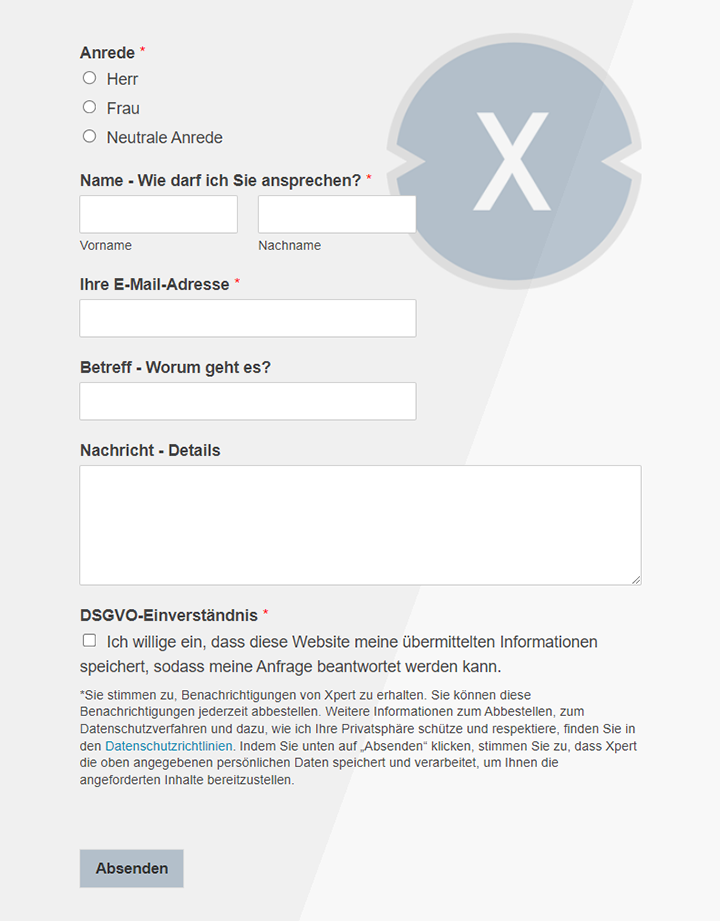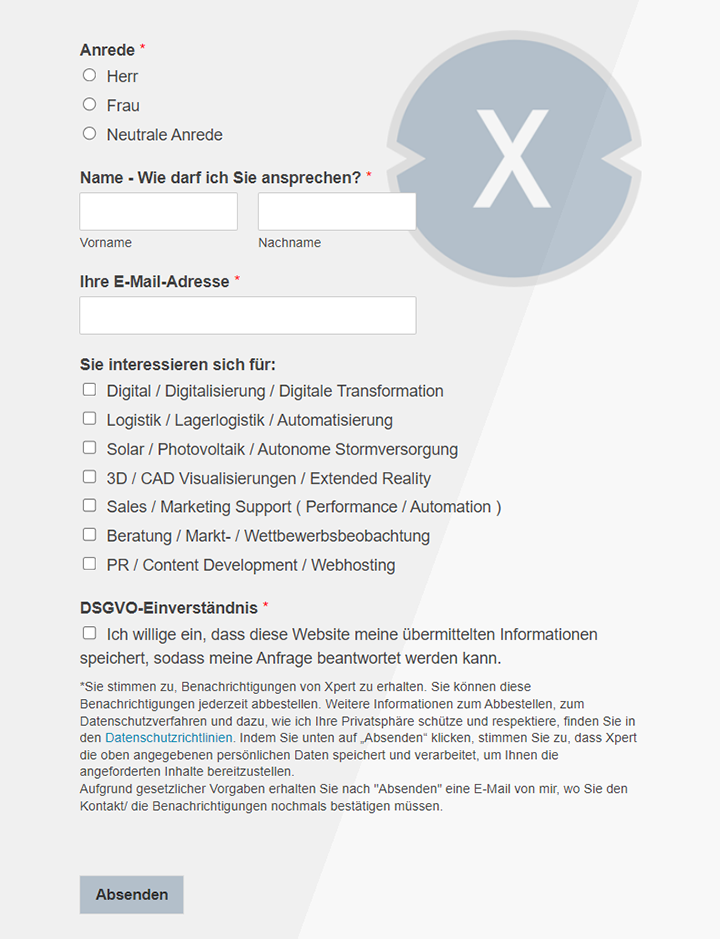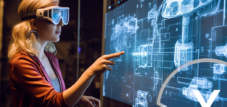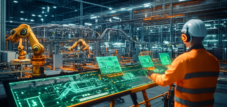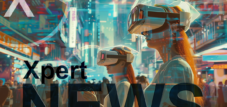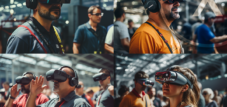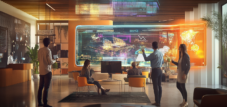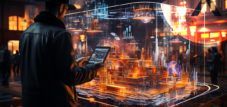Augmented Reality in the Metaverse: The next generation of product development with digital twins has begun
Xpert pre-release
Language selection 📢
Published on: December 29, 2024 / update from: December 29, 2024 - Author: Konrad Wolfenstein
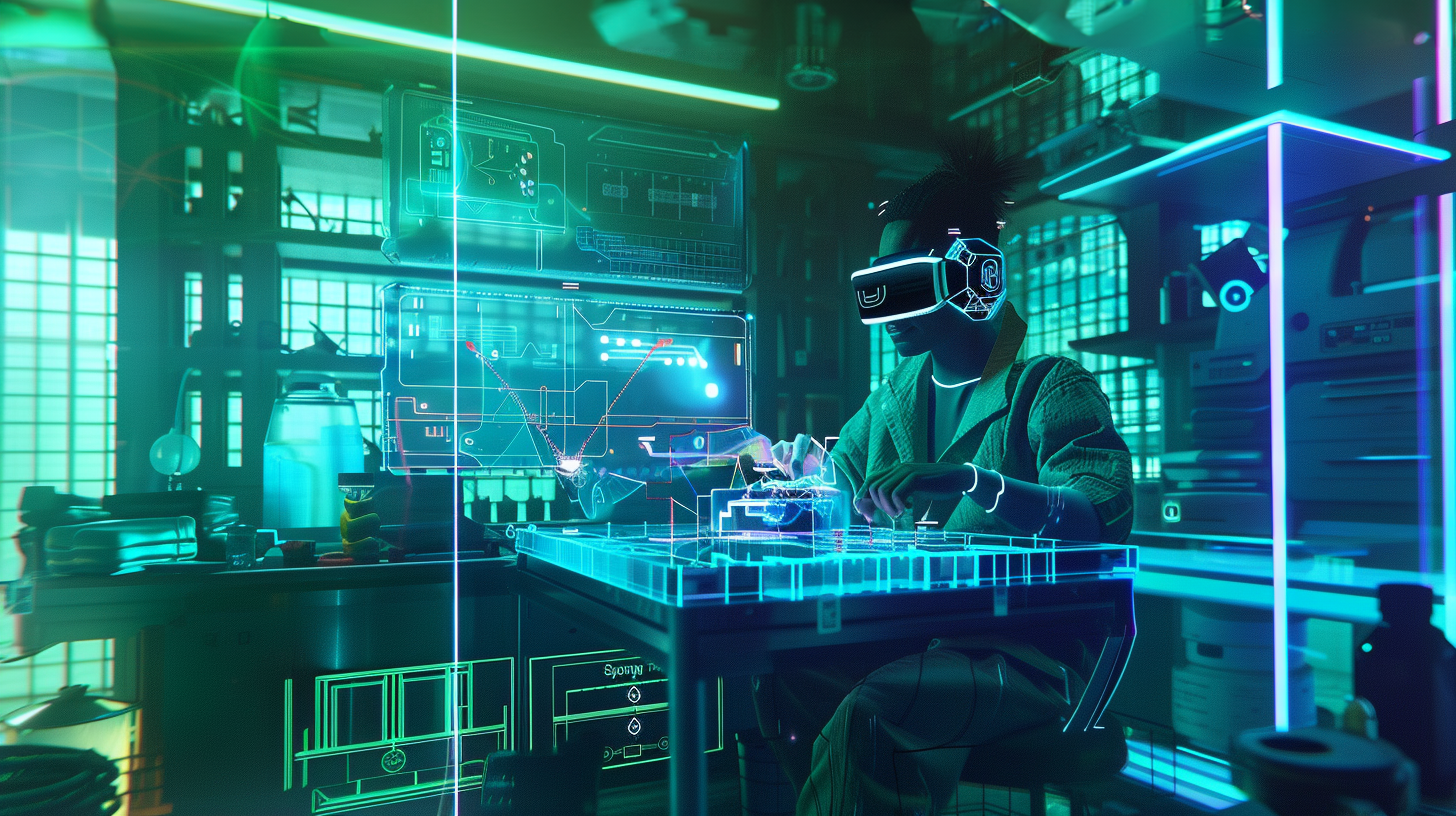
Augmented Reality in the Metaverse: The next generation of product development with digital twins has begun - Image: Xpert.Digital
Technology Trio of Innovation: What Augmented Reality, the Metaverse and Digital Twins Make Possible
The fusion of augmented reality in the metaverse and digital twins heralds a revolutionary era in product development. This dynamic combination opens up unimagined opportunities for companies to design their products more efficiently, more innovatively and more customer-oriented, from initial conception to market launch and beyond. The integration of these technologies makes it possible to transform the entire product life cycle in ways that until recently seemed science fiction.
Virtual prototyping and product design in a new dimension
The traditional, often costly and time-consuming processes of prototyping are increasingly becoming a thing of the past thanks to AR and digital twins. The automotive industry in particular recognized and implemented the advantages of these technologies early on. We hear that leading manufacturers such as BMW and Hyundai are using digital twins and advanced AR applications to fundamentally redesign the development and production of their vehicles. Imagine engineers wearing AR glasses and being able to overlay virtual models of vehicle components over the real environment in real time, edit them directly and compare different design variants directly with each other. This ability to quickly iterate design changes without having to produce physical models not only significantly speeds up the development process, but also reduces material costs and the need for physical test runs. Early identification and correction of potential design errors in the virtual world saves valuable time and resources in the later production phase.
Similar disruptive developments are also emerging in the fashion industry. Companies like Nike are reportedly experimenting heavily with AR and digital twins to revolutionize the design process of sporting goods, particularly sneakers. Designers can now develop both physical and digital designs in parallel and view virtual shoe models in real environments to better assess their impact in different contexts. This enables a more precise coordination of design and functionality and opens up new creative scope. The ability to virtually test and combine fabrics, colors and shapes not only speeds up the design process, but also enables greater personalization of products.
However, the benefits of virtual prototyping go far beyond pure visualization. By integrating simulation software, companies can test the performance and behavior of their virtual prototypes under various conditions. For example, load tests, aerodynamic simulations or thermal analyzes can be carried out before a physical product even exists. This makes it possible to identify and correct potential vulnerabilities at an early stage, significantly improving the quality and reliability of the end products. One can imagine how this is crucial in safety-critical industries such as aerospace or medical technology.
Collaborative product development without geographical boundaries
AR technology in the Metaverse eliminates geographical barriers in product development. Thanks to this technology, teams spread across different locations around the world can work together on virtual 3D models as if they were sitting in the same room. Engineers, designers, and other professionals can make changes to the models in real time, provide feedback, and collaborate to develop solutions. This form of collaborative work not only promotes global collaboration, but also significantly shortens development cycles. The ability to discuss complex issues visually and interactively, rather than relying on email or video conferencing, improves communication and mutual understanding within teams. This leads to more efficient decision-making and faster implementation of innovations.
We hear that this type of collaboration also increases the innovative power of companies. By involving experts from different disciplines and cultures, new perspectives and ideas can flow into the development process. The virtual environment makes it possible to hold creative brainstorming sessions in which all participants can actively and equally participate in idea generation. This democratization of the innovation process can lead to groundbreaking new products and solutions.
Immersive simulations for optimized production processes
The combination of AR and digital twins opens up fascinating possibilities for simulating complex production processes. Automobile manufacturers are reported to be using this technology to virtually plan and optimize entire production lines before physical implementation takes place. By simulating various scenarios, potential bottlenecks, inefficiencies or security risks can be identified and eliminated at an early stage. This leads to a significant reduction in production costs, an increase in efficiency and an improvement in occupational safety.
One can imagine how valuable this technology is for other industries, such as food production, the chemical industry or logistics. The ability to test and optimize production processes virtually minimizes the risk of expensive planning errors and production downtimes. In addition, by simulating different production scenarios, companies can react better to changing market conditions or unexpected events.
Customizations and personalized experiences
In the e-commerce space, AR is revolutionizing the way customers experience and purchase products. Furniture manufacturers, we hear, are already offering AR apps that allow customers to virtually place and adjust pieces of furniture in their own living spaces before making a purchase decision. This ability to visualize products in the real world before purchase increases the likelihood of a satisfactory purchasing experience and reduces the return rate.
This technology is also becoming increasingly important in other industries. Apparel manufacturers are experimenting with virtual try-on options that allow customers to try on garments virtually without ever having to set foot in a store. This saves time and effort and opens up new possibilities for personalized shopping experiences. The ability to configure products individually and visualize them in your own environment strengthens customer loyalty and promotes the individualization of products.
Revolutionizing maintenance and training
AR combined with digital twins is also transforming the areas of maintenance and training. Maintenance technicians are reported to be using AR glasses that project relevant information and instructions directly over the real machine. This helps you diagnose and repair complex systems, increases the efficiency and accuracy of maintenance work and reduces downtime. The ability to have step-by-step instructions directly in your field of vision minimizes the risk of errors and speeds up the repair process.
AR technology also offers enormous advantages when it comes to training employees. New employees can be trained on complex machines in a safe and interactive virtual environment without the risk of damage or injury. Through realistic simulations, they can gain hands-on experience and improve their skills before working on real systems. This leads to better qualifications for employees and higher productivity.
Urban planning and architecture in the digital age
Digital twins of entire cities or individual buildings, visualized using AR, open up fascinating possibilities for city planners and architects. You can simulate planned changes or new buildings in the real environment and assess their impact on the infrastructure, the cityscape and the quality of life of the residents. This enables more informed decision-making and better citizen participation in planning processes.
We hear that this technology also plays an important role in the development of sustainable cities. By simulating energy flows, traffic flows and environmental impacts, urban planners can develop measures to make cities more efficient, more environmentally friendly and more livable. The ability to virtually test various planning scenarios minimizes the risk of wrong decisions and enables optimized use of resources.
The examples clearly illustrate how AR in the Metaverse in conjunction with digital twins is revolutionizing product development and many other areas of our lives. The seamless integration of virtual and physical elements accelerates innovation, reduces costs, improves collaboration and enables completely new ways of interacting with products and our environment. The next generation of product development and beyond promises to be more efficient, creative, sustainable and customer-focused than ever before. We are only at the beginning of this development, and it can be expected that the possibilities of these technologies will increase even further in the future, which will lead to even more profound changes in the economy and society.
🗒️ Xpert.Digital: A pioneer in the field of extended and augmented reality
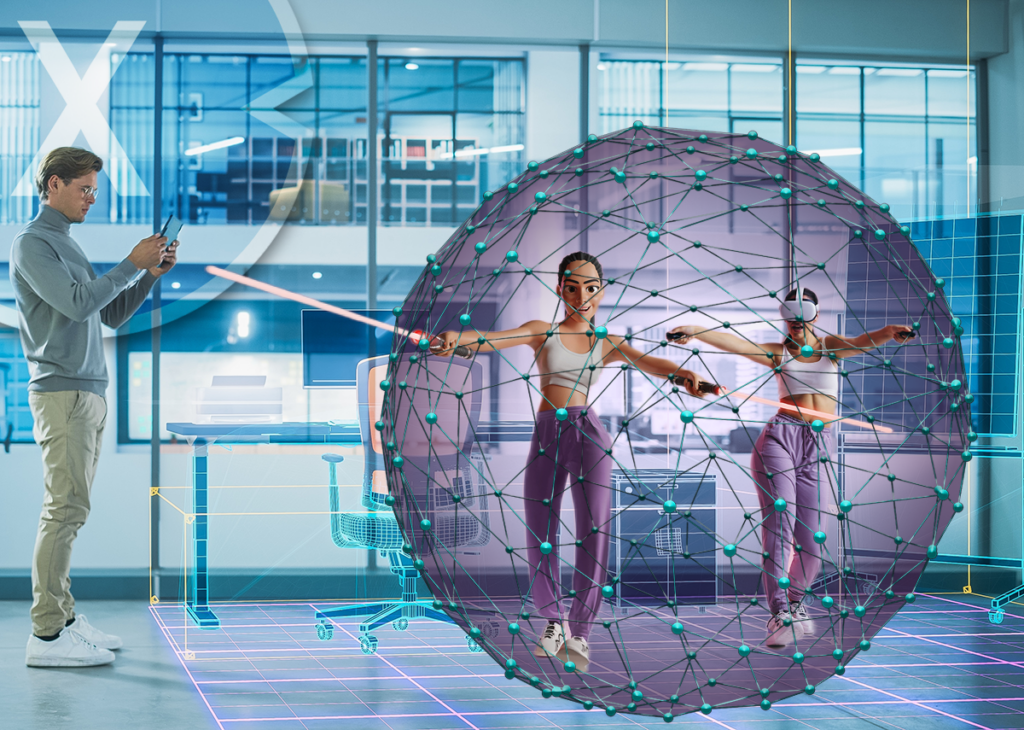
Find the right Metaverse agency and planning office such as a consulting firm - Image: Xpert.Digital
🗒️ Find the right Metaverse agency and planning office such as a consulting firm - search and search for top ten tips for consulting & planning
In the age of digitalization, where technologies such as Extended Reality (XR) and the Metaverse are constantly becoming more relevant, Xpert.Digital positions itself as an opinion leader and pioneer. With over 1,500 specialist articles, Xpert.Digital has established itself as a central point of contact for the industry.
🌌 Extended Reality (XR): The best of both worlds
Extended Reality is a collective term that includes virtual reality (VR), mixed reality (MR) and augmented reality (AR). Xpert.Digital is committed to creating immersive XR experiences that are both informative and entertaining.
- Interactive Experiences: XR allows users to immerse themselves in virtual worlds and interact with their surroundings in ways previously unimaginable.
- Education and Training: XR can be used for educational purposes to convey complex topics and concepts in an understandable and tangible way.
- Entertainment: Whether games, films or art – XR opens new horizons in digital entertainment.
🔮 Augmented Reality (AR): See the world through digital eyes
Augmented Reality, a particular focus of Xpert.Digital, makes it possible to integrate digital information or graphics into the real world. The possibilities are nearly unlimited.
- Marketing and Advertising: AR can be used to create interactive advertising campaigns that engage customers in a whole new way.
- Everyday help: From navigation apps that project the route directly onto the street to furniture apps that show what a new sofa would look like in the living room - AR makes it possible.
🌐 The Metaverse: The Next Big Thing
The Metaverse is a virtual world where people can interact through avatars and create shared experiences. Xpert.Digital recognizes the enormous potential of the Metaverse and is working to translate this potential into usable products and services.
- Social Interaction: The Metaverse offers the opportunity to connect with people from all over the world and share common experiences.
- Economy and trade: Virtual goods and services can be traded in the metaverse, which opens up completely new business models and sources of income.
- Creative Freedom: From building your own worlds to designing custom avatars, the Metaverse is a place of endless creative possibilities.
🚀 Xpert.Digital at the forefront of innovation
Xpert.Digital shows how a company can be at the forefront of the technological revolution. With their focus on XR, AR and the Metaverse, they are well positioned to shape and define the future of digital interaction.
More about it here:
Augmented Reality in the Metaverse: The Future of Product Development with Digital Twins
The combination of augmented reality (AR) and the metaverse, in conjunction with digital twins, offers revolutionary possibilities for product development. These technologies are much more than just gimmicks: they create a bridge between virtual and physical worlds and transform how companies design, test and bring products to market. From virtual prototypes to immersive simulations, the next generation of product development has begun.
The role of augmented reality and digital twins
Augmented reality allows digital information to be embedded in the real world, while digital twins represent virtual replicas of real objects or systems. The combination results in new, powerful tools for companies:
- Increased efficiency: Processes that previously took weeks or months can be visualized and adjusted in real time.
- Cost reduction: By eliminating physical prototypes and optimizing the use of resources, development and production costs are reduced.
- Improved collaboration: Teams can work on projects regardless of location, increasing the speed of innovation.
Virtual prototyping and innovative product design
AR and digital twins play a central role in modern product development:
Automotive industry: Fast iterations and better design
Car manufacturers such as BMW and Hyundai rely on digital twins and AR technologies to plan and test vehicle components more efficiently. Engineers can view and modify virtual prototypes in real time without creating physical models. “With AR we can not only implement design changes quickly, but also facilitate collaboration between teams,” said a Hyundai engineer.
Fashion industry: digitally and physically connected
This technology has also found its way into the fashion industry. Nike uses digital twins to digitally design sneakers and test them in real-world environments. Designers can “place virtual shoe models in different lighting and environments to find the perfect design.” This saves time and resources and enables a seamless integration of functionality and aesthetics.
Global collaboration through AR
With AR technology, teams around the world can work on the same projects without being physically present. Thanks to virtual 3D models, collaboration is not only easier, but also more effective. Engineers and designers can provide real-time feedback and adjustments. This significantly shortens development cycles and increases the speed of innovation. This type of collaboration is becoming standard, especially in global companies.
Immersive simulations: Optimize production processes
The combination of AR and digital twins makes it possible to simulate entire production processes virtually. An example from the automotive industry:
Manufacturers can plan production lines digitally and identify potential bottlenecks before physical implementation occurs. These “virtual test runs” help to identify inefficiencies at an early stage and minimize production costs. Aircraft manufacturers also use similar technologies to optimize complex manufacturing processes.
Customization in e-commerce
AR is revolutionizing e-commerce by offering customers an unprecedented opportunity for product customization. An example from the furniture industry: Companies like IKEA offer apps that allow customers to virtually place pieces of furniture in their own home. “Thanks to AR, our customers can see exactly what a product looks like in their room before they make a purchase decision,” explains an IKEA spokesperson. This increases customer satisfaction while reducing returns.
Maintenance and training: More efficient through AR
In the area of maintenance and training, AR and digital twins offer immense advantages. Maintenance technicians can use AR glasses that show them relevant information and instructions about the real machine. This results in faster and more precise repairs.
An example from the aviation industry: Technicians working on complex aircraft engines receive real-time instructions about which components need to be replaced or serviced. Training can also be conducted in a secure, virtual environment, significantly shortening the learning curve.
Urban Planning and Architecture: Visionary Approaches
The combination of AR and digital twins also has a transformative effect in urban planning and architecture. Architects can simulate planned buildings in their real surroundings to assess their impact on infrastructure and the cityscape. City planners have the opportunity to create digital twins of entire districts in order to analyze traffic flows or environmental impacts of new construction projects. These approaches promote sustainable construction and an improved quality of life in urban areas.
Challenges and future potential
Despite all the advantages, AR and digital twins still face some challenges. This includes:
- High initial investment: The development and implementation of these technologies requires significant financial resources.
- Technological complexity: Integration into existing systems and processes is complex and time-consuming.
- Data protection: Companies must ensure that sensitive data is protected, especially when creating digital twins.
Advances in artificial intelligence and machine learning will further advance the use of AR and digital twins. Companies can not only work more efficiently, but also develop completely new business models.
The combination of augmented reality, the metaverse and digital twins marks a new era in product development. Companies can develop products faster, more cost-effectively and with more customer focus than ever before. From the automotive industry to the fashion industry to architecture – the possible uses are almost unlimited. These technologies not only offer competitive advantages, but also the opportunity to fundamentally change the way we work and live. The journey has just begun and the potential is limitless.
We are there for you - advice - planning - implementation - project management
☑️ SME support in strategy, consulting, planning and implementation
☑️ Creation or realignment of the digital strategy and digitalization
☑️ Expansion and optimization of international sales processes
☑️ Global & Digital B2B trading platforms
☑️ Pioneer Business Development
I would be happy to serve as your personal advisor.
You can contact me by filling out the contact form below or simply call me on +49 89 89 674 804 (Munich) .
I'm looking forward to our joint project.
Xpert.Digital - Konrad Wolfenstein
Xpert.Digital is a hub for industry with a focus on digitalization, mechanical engineering, logistics/intralogistics and photovoltaics.
With our 360° business development solution, we support well-known companies from new business to after sales.
Market intelligence, smarketing, marketing automation, content development, PR, mail campaigns, personalized social media and lead nurturing are part of our digital tools.
You can find out more at: www.xpert.digital - www.xpert.solar - www.xpert.plus




